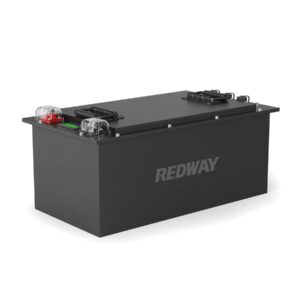
What is the average life of a car battery?
The average car battery lifespan is 3–5 years, depending on climate, driving patterns, and maintenance. Lead-acid batteries dominate the market, with 500–1,000 charge cycles. Extreme heat accelerates electrolyte evaporation, while cold reduces cranking amps. Pro Tip: Monthly voltage checks (≥12.4V) prevent sulfation. Lithium-ion alternatives last 8–12 years but cost 3x more. Proper charging systems and avoiding deep discharges (<50%) maximize longevity.
How to Safely Dispose of and Recycle Car Batteries
What factors influence car battery lifespan?
Key factors include temperature extremes, charging habits, and parasitic drains. Batteries in Phoenix degrade 2x faster than in Seattle due to 120°F+ engine bay heat. Frequent short trips (<15 minutes) prevent full recharging, causing chronic undercharge. Pro Tip: Install thermal wraps in hot climates—they reduce internal temps by 20°F, adding 8–12 months to battery life.

Lead-acid batteries lose 33% capacity at 32°F and 50% at -22°F. Modern vehicles with start-stop systems use AGM (Absorbent Glass Mat) batteries rated for 3–5x deeper discharges than flooded types. A 2023 study showed taxis with daily 100-mile routes average 4.7 years vs. 2.9 years for grocery-run vehicles. Warning: Aftermarket audio systems drawing >30mA when off can drain batteries in 10 days. Always use a multimeter to check parasitic loads—anything over 50mA warrants circuit investigation.
| Battery Type | Cycle Life | Cost |
|---|---|---|
| Flooded Lead-Acid | 3–5 years | $80–$150 |
| AGM | 4–6 years | $200–$300 |
| Lithium Iron Phosphate | 8–12 years | $400–$800 |
How do I know when my car battery is dying?
Warning signs include slow engine cranking, dim lights, and swollen cases. A battery dropping below 12.2V (40% charge) risks failure. Pro Tip: Load test batteries annually—a 12.4V battery showing <9.6V under 50% CCA load needs replacement.
Modern cars trigger dashboard warnings like “Battery Saver Active” or “Low Battery.” On older models, test voltage during cold starts: if it dips below 10V, sulfation has likely compromised capacity. For example, a 5-year-old battery taking 8 seconds to start a V6 engine (vs. 2 seconds when new) is failing. Corrosion on terminals (white/green powder) increases resistance, mimicking low charge. Clean terminals with baking soda/water mix and apply dielectric grease monthly.
Can I extend my battery’s life beyond 5 years?
Yes, through smart charging, temperature control, and monthly maintenance. Keep batteries at 12.4V–12.7V when idle. Pro Tip: Use a 2A trickle charger during storage—it prevents self-discharge (3–5% monthly loss) without overcharging.
AGM batteries benefit from monthly equalization charges at 15V for 2 hours to prevent stratification. In freezing climates, park in garages to reduce CCA loss. For flooded batteries, check electrolyte levels every 3 months—top up with distilled water if plates are exposed. A 2022 AAA study found owners who cleaned terminals biannually extended battery life by 14%. Consider upgrading to calcium-enhanced batteries if your commute involves frequent short trips; they handle partial charging better.
| Maintenance Task | Frequency | Impact |
|---|---|---|
| Terminal Cleaning | Every 6 months | +12–18 months |
| Voltage Check | Monthly | +6–9 months |
| Load Test | Annually | Prevents sudden failure |
Battery Expert Insight
FAQs
Does jump-starting damage batteries?
Frequent jump-starts accelerate plate corrosion. Limit to 3x annually—chronic deep discharges below 10.5V cause irreversible sulfation.
Are expensive batteries worth it?
Premium AGM/lithium batteries last 2–3x longer in harsh conditions. For EVs/hybrids, OEM-spec units prevent CAN bus errors—aftermarket may void warranties.
